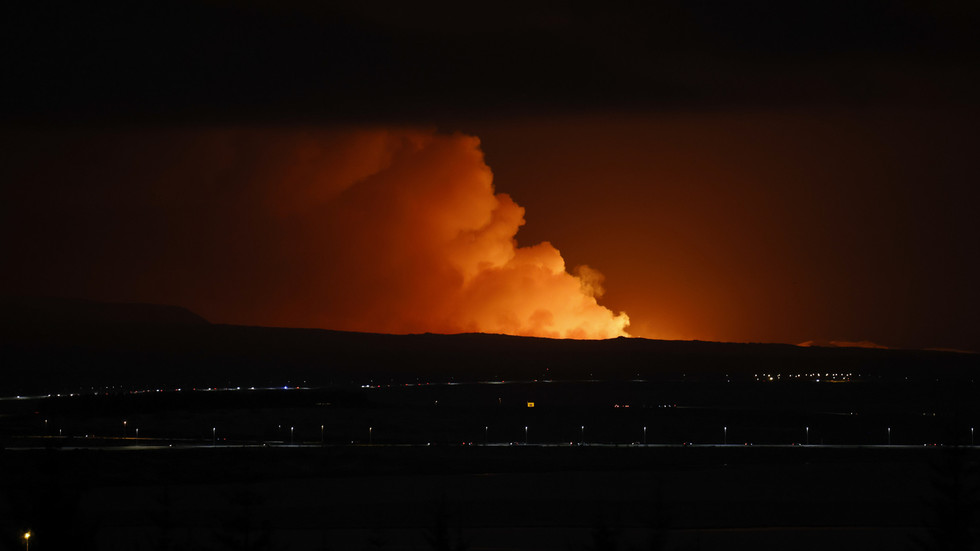
The eruption has begun on the Reykjanes peninsula after seismic activity shook the area for weeks

The night sky is illuminated caused by the eruption of a volcano on the Reykjanes peninsula of south-west Iceland seen from the capital city of Reykjavik, December 18, 2023 © AP / Brynjar Gunnarsson
A volcano under southwestern Iceland’s Reykjanes peninsula has begun erupting following weeks of earthquake activity that destroyed homes, broke apart roads and prompted evacuations of a nearby fishing village.
The eruption started after 10pm local time on Monday and was located around three kilometers (two miles) north of Grindavik, the Icelandic Meteorological Office (IMO) said in a statement. An earthquake swarm began shaking the area about an hour before the volcano erupted.
A Coast Guard helicopter was being dispatched to confirm the eruption’s exact location and size when the IMO statement was issued. The approximately 4,000 residents of Grindavik were forced to flee their homes last month, as Icelandic authorities warned that magma was getting closer to the Earth’s surface and could burst through.
Video from helicopter above fissure just broadcast in live news programme #Iceland#volcanopic.twitter.com/3SrH2mN3JK
— Duncan (@shaksper) December 18, 2023
When ur on the last already delayed flight back from Iceland and the volcano erupts xox pic.twitter.com/rjEZwHtHe5
— Maymah💜 (@moomie__) December 18, 2023
#Iceland#Grindavik from the family in #Hafnarfjördurpic.twitter.com/LmwxQrzSvZ
— Caroline Keep (@Ka81) December 18, 2023
The volcano also is located near one of Iceland’s top tourist attractions, the Blue Lagoon geothermal spa, which has been closed since November 9 amid the heavy seismic activity. Grindavik is located about 35 miles southwest of Iceland’s capital, Reykjavik.

The eruption was reportedly visible from Reykjavik. A video clip posted on social media purported to show a view of the volcano from a plane preparing to take off from the Keflavik Airport, west of Reykjavik.
A 2010 eruption of the Eyjafjallajokull volcano in southern Iceland spewed huge clouds of volcanic ash into the atmosphere, causing the largest disruption to European airline flights since World War II.




